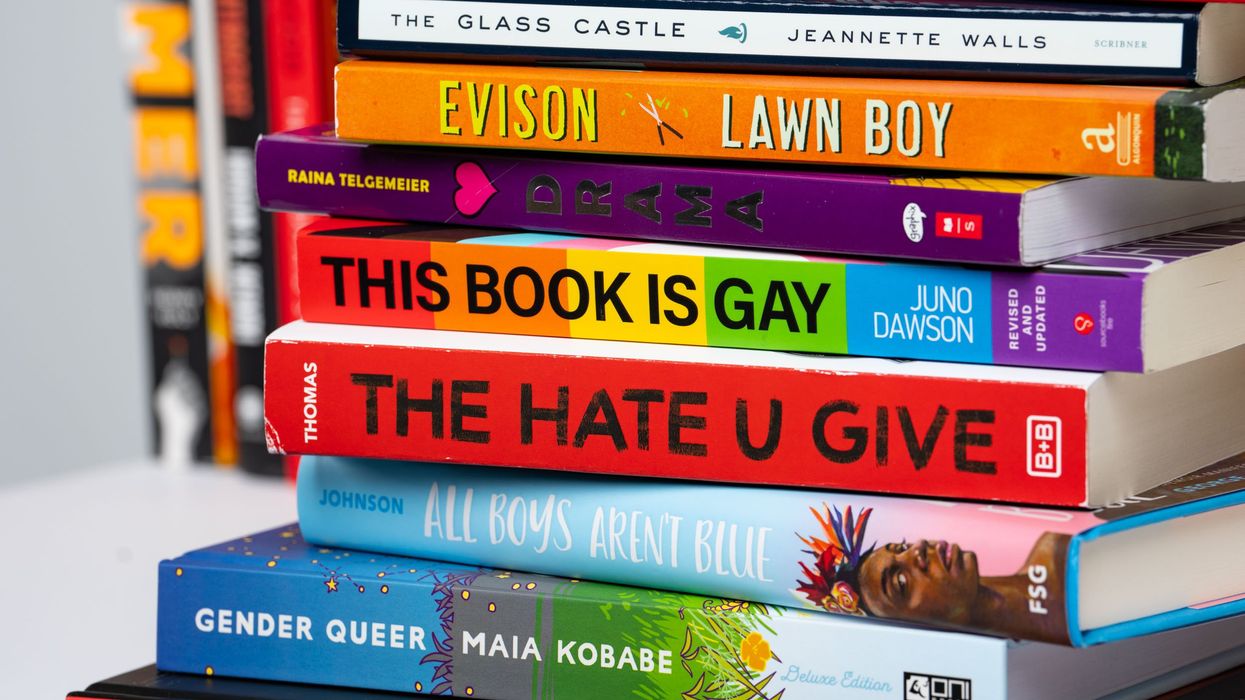Aguilar is a user engagement and insights librarian at San José State University’s King Library. He is a public voices fellow of The OpEd Project.
A bill recently passed by the West Virginia House of Delegates is one of the latest attempts to censor educational materials. If the measure becomes law, it would make librarians and other educators criminally liable for showing obscene materials to children who are not accompanied by an adult. Librarians and teachers could then face felony penalties, up to $25,000 in fines, and even up to five years in jail.
HB4654 fits within a growing movement across the country to ban and/or censor media that have largely been works created by, or related to, experiences of LGBT+ communities and communities of color.
The American Libraries Association’s Office for Intellectual Freedom has tracked these attempts for over 20 years and reported an “unparalleled number of reported book challenges in 2022.” OIF documented 1,269 demands to censor a record number of 2,571 unique titles in 2022, which was a 38 percent increase in titles challenged for censorship during the previous year. Preliminary data gathered for 2023 shows an additional 20 percent increase in challenges to unique titles and attempts to censor library materials and services.
According to the ALA, the vast majority of these challenges target books written by or about a person of color or a member of the LGBTQIA+ community. Recent studies by PEN America demonstrated a 33 percent increase in the number of books banned between the 2021-22 and 2022-23 academic school years, using rhetoric such as “porn in schools,” “sexually explicit,” “harmful” and “age inappropriate.”
While over 40 percent of these bans come solely from school districts in Florida, the rhetoric surrounding their reasoning and justification poses a threat to knowledge and equity across the country. Yet, given our current political climate and the fact that these numbers are consistently rising, it is no surprise that other states are following suit, including West Virginia.
Supporters of the West Virginia bill argue that it is solely about protecting children, with the lead sponsor of the bill, Del. Brandon Steele (R), even going so far to call libraries “the sanctuary for pedophilia.” Yet, I would argue these attempts are not about protecting children and much more about excluding certain populations from accessing materials relevant to their own lived experiences, as well as denying access to humanizing representations of under-represented communities for children of the dominant cultures.
These attempts are so far removed from having the best interest of children in mind that the West Virginia bill would effectively ban a number of health sciences books from libraries and curriculum. Del. Mike Pushkin attempted to introduce an amendment to the bill to provide an exception for health teachers, but it was voted down by the House.
So I would ask, who is really being protected by these efforts to limit access to books and other educational materials? Surely it is not LGBT+ youth, who often face social stigma and a lack of connection in schools. If legislators were concerned about protecting these children, they would be engaged in efforts to address the high rates of mental illness and suicidal behaviors of LGBT+ youth.
They would additionally support efforts to improve LGBT+ students’ connections with education spaces, as research shows that when students feel connected to a supportive school community, they do better socially, emotionally and academically. It is my belief that these efforts are not about protecting children, nor having their best interest in mind — they are about excluding voices and experiences from curriculum. These bans help perpetuate existing power imbalances by limiting who is represented in educational spaces and materials.
To be clear, however, this is not to say that children should have access to every book and resource created, nor that parents shouldn’t have a voice in the education of their children. Yet, current legislations ignore the fact that protections for children already exist in library collection development guidelines and policies. ALA itself has created a number of resources and guidelines to help protect children from inappropriate materials, with its guidelines for school libraries stating that materials should be “appropriate for the subject area and for the age, emotional development, ability level, learning styles, and social, emotional, and intellectual development of the students for whom the materials are selected.” There are additional tools to assist librarians in determining which materials are appropriate for school librarians including the Notable Children's Books List and the School Library Journal.
ALA additionally recognizes that although titles go through these guidelines, there are always instances where patrons (and/or parents) may not agree with a material being part of a collection. Because of this, the ALA provides templates of reconsideration that concerned patrons and parents may use to contact their local school boards regarding specific titles. Further, ALA even provides guidelines for librarians and educators to use during the reconsideration process.
Reconsideration processes are a much more equitable approach than broad-sweeping legislation, as they allow multiple voices of expertise to engage in discussion regarding materials relevant to their school. After all, what is deemed inappropriate by one parent may be deemed fully appropriate by another, and the same argument can be true for schools and school districts.
Thus, the protection of children from inappropriate materials and the development of diverse collections are not in conflict with each other. Librarians have many tools, guidelines and policies at their disposal that allow them to meet the educational needs of students through the development of rich and diverse collections.
For this reason, I encourage everyone to do what they can to help stop these targeted efforts to ban diverse reading materials. To assist with this, the American Library Association’s Unite Against Book Bans initiative has put together a toolkit full of resources to help people get involved. The toolkit includes information on talking points related to book bans, events and clubs, social media tools, and branded materials.
One of the quickest and direct ways to challenge these bans can be found in the resources provided for writing letters to the editors of your local newspaper and contacting local decision makers including school boards, library boards, and other elected officials. Afterall, these are the people who hold the power to enact and enforce these bans. They should be hearing from, and listening to, the people who have elected them into office.
We all need to be truly committed to the development of equitable educational experiences that fully support the needs of all learners, and we must support efforts to make sure everyone feels represented and, thus, like they belong.



















